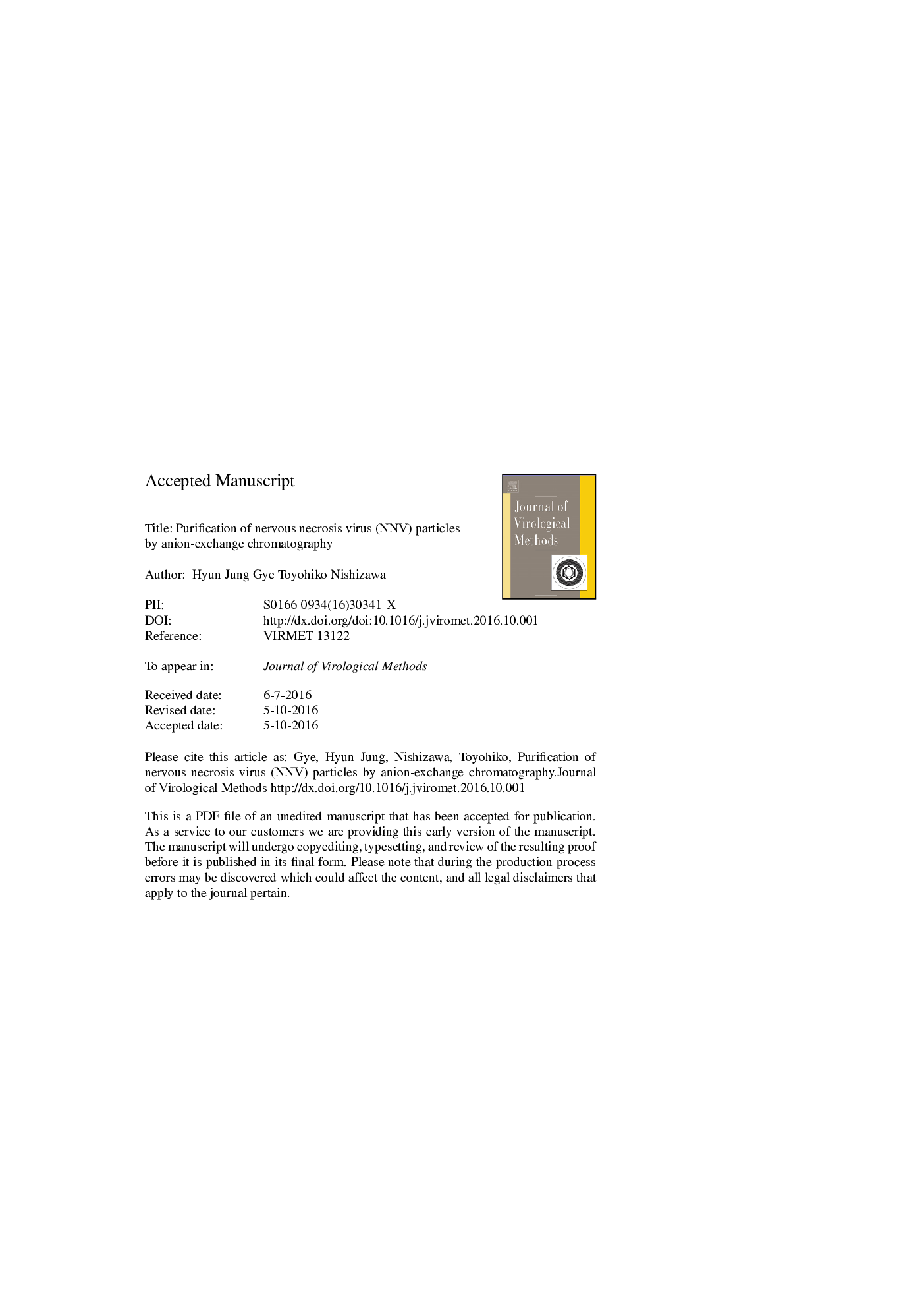| Article ID | Journal | Published Year | Pages | File Type |
|---|---|---|---|---|
| 5673164 | Journal of Virological Methods | 2016 | 20 Pages |
Abstract
Nervous necrosis virus (NNV) belongs to genus Betanodavirus (family Nodaviridae). It is highly pathogenic to various marine fishes. In the present study, cultured NNV suspension was placed in dialysis tube at molecular weight cut off (MWCO) of 106 and dialyzed against Dulbecco's phosphate buffered saline (D-PBS), 15Â mM Tris-HCl (pH 8.0), or deionized water (DIW) for 14Â days followed by anion-exchange chromatography. Infectivity titers of NNV suspensions were stable during dialyses. However, the antigenicity of NNV suspension was decreased to 2.5% by D-PBS dialysis, 11.8% by Tris-HCl dialysis, and 56.2% by DIW dialysis. Anion-exchange chromatograms revealed a total of four peaks (P300, P400, P600 and P700) for NNV suspension after D-PBS dialysis. Additional two peaks (P800 and P-OH) were detected in the NNV suspension after Tris-HCl or DIW dialysis. The substance from the P700 peak had the highest NNV-infectivity. Peak P700 commonly shared by the NNV suspensions after dialysis against the three different buffers. After Tris-HCl dialysis, no other protein except NNV coat protein (CP) at Mr 41,000 was detected from P700. However, after D-PBS dialysis, the P700 peak also contained P600 antigens. Therefore, the P700 peak after Tris-HCl dialysis represented the peak of highly purified NNV particles.
Related Topics
Life Sciences
Immunology and Microbiology
Virology
Authors
Hyun Jung Gye, Toyohiko Nishizawa,
